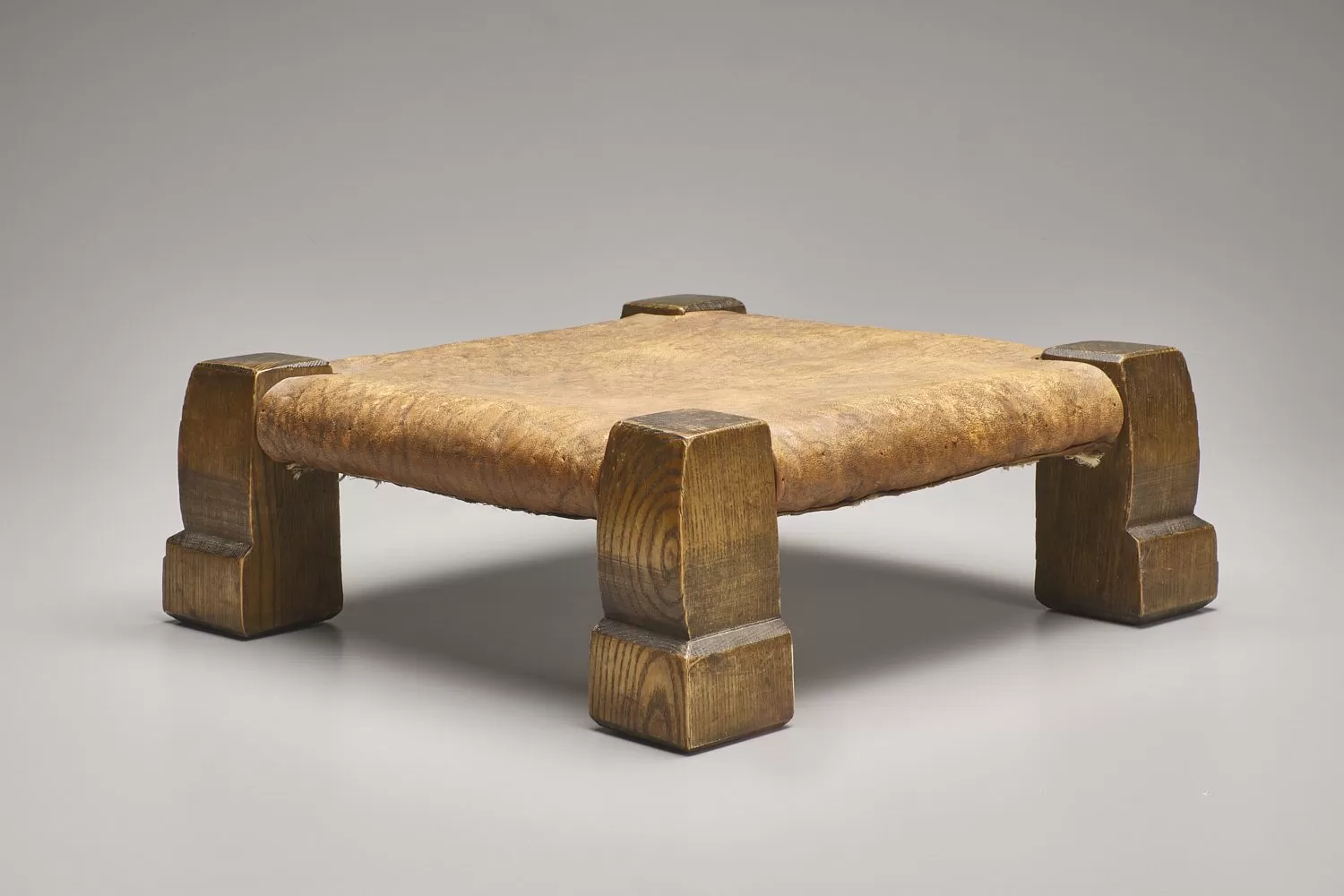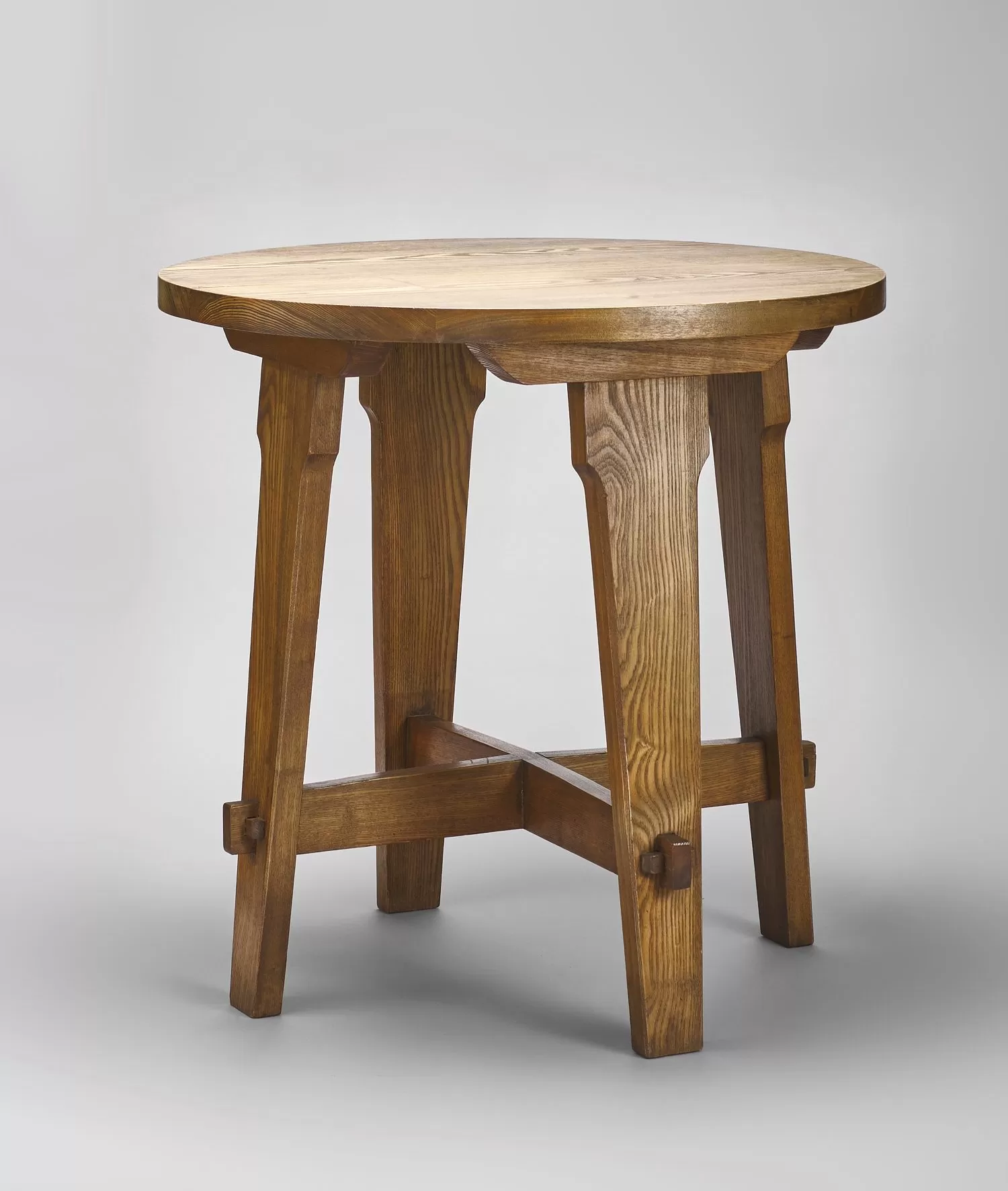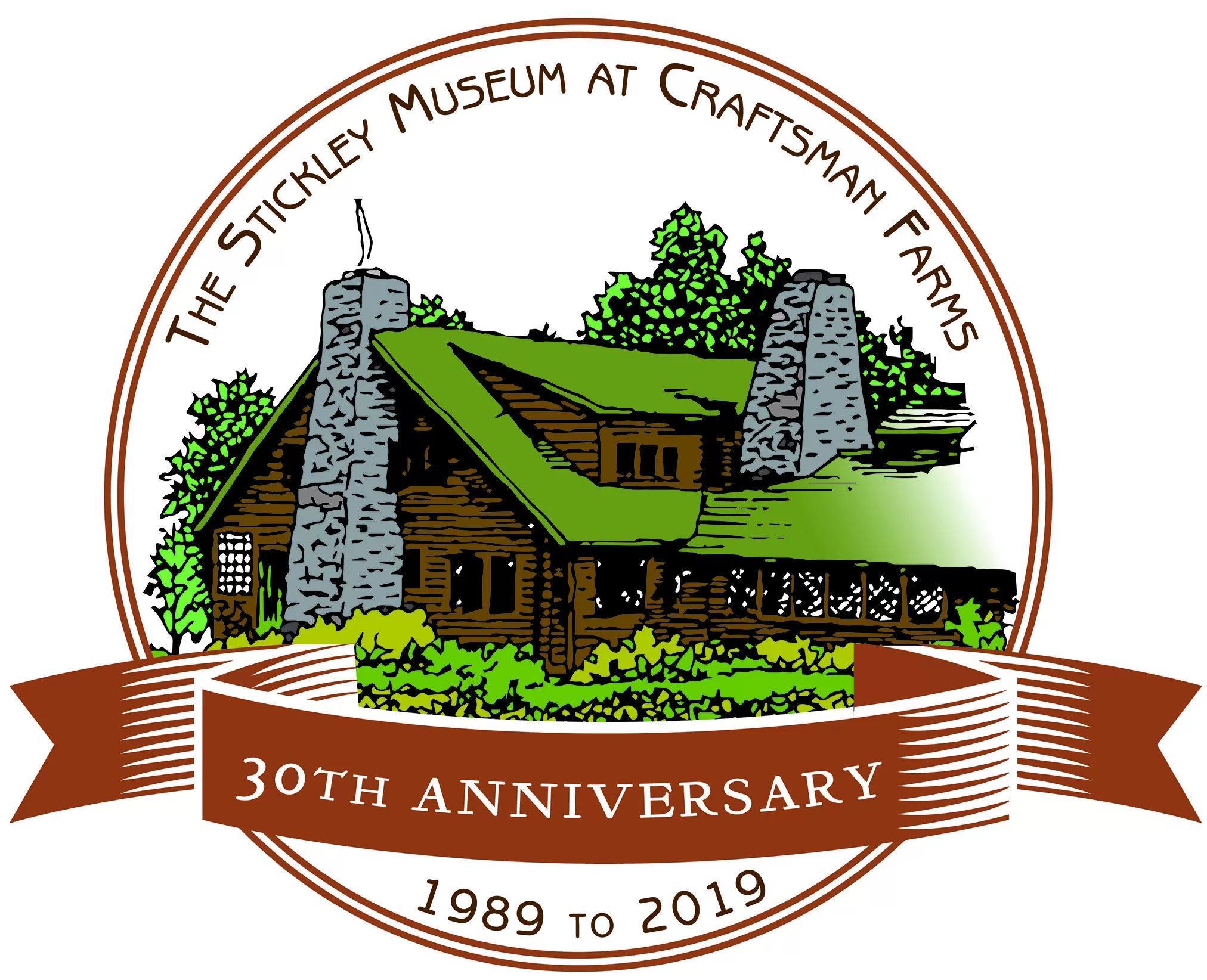Rare Stickley Furniture Finds New Home at Craftsman Farms
From the desk of Executive Director Vonda Givens:

Collections News from the Stickley Museum at Craftsman Farms
Today, few visitors who tour Stickley’s Log House at Craftsman Farms would imagine that 30 years ago, when the Township of Parsippany-Troy Hills took ownership, it was empty. Preservation and interpretation of the site was entrusted by the Township to The Craftsman Farms Foundation—today the Stickley Museum at Craftsman Farms. This partnership set the organization on its path to becoming a non-profit historic house museum.
Since 1989, as the museum has grown, so have its collections much of which, furnish the Log House and include furniture, textiles, metals and pottery. The museum also collects books, periodicals, photographs and ephemera (paper collections will soon have a new home in the Education Center, now under construction).
While the growth of the museum’s collections has been imperative from the beginning, it has been important for this growth to be in quality as well as quantity. In preparing to serve future generations of visitors and scholars, our collections should express both breadth and depth. Recent important and rare gifts to our furniture collections demonstrate both and will be a key resource for learning and study for years to come.
Through the generosity of John and Neville Bryan, shortly before Mr. Bryan’s passing last year, the museum acquired a Craftsman Workshops dining table (no. 633), which retains its original ebonized finish, two scrap baskets (no. 94) and a hall seat (no. 224). The small, beautifully proportioned hall seat has been placed next to the dining room hearth, where Stickley originally placed a larger seat of similar design.
From Gregg and Monique Seibert, an extraordinary collection of rare green ash furniture was gifted to the museum in recent months. About this collection, David Cathers wrote in a 2007 article for American Bungalow (Issue 54), “’Rare’ takes on a whole new meaning with the discovery of a group of Stickley furniture that has somehow miraculously stayed together….Though a century old at the time of its discovery, this furniture was so perfectly preserved that it seemed fresh from the factory floor…”
“When we were fortunate enough to acquire this intact group of Stickley ash furniture from a cottage by the Finger Lakes in upstate New York, we always knew that we were just taking care of it until it found its true home…” – Gregg Seibert

United Crafts, stool (no. 726), ca. 1901. Gift of Gregg and Monique Seibert. Photo credit: Jonathan Clancy.

United Crafts, lamp table (no. 411), ca. 1901. Gift of Gregg and Monique Seibert. Photo Credit: Jonathan Clancy.

Caption: Craftsman Workshops, Hall Seat (no. 224), ca. 1909-16 Gift of John and Neville Bryan. Photo Credit: Jonathan Clancy.
The museum is honored to be entrusted with this remarkable grouping of 19 pieces of United Crafts furniture which includes a lamp table (no. 411) and two footstools (no. 726). Though not currently on display, plans are in the works for their exhibition. Perhaps the best insight into the meaning of this important gift comes from the donor himself, Gregg Seibert:
“Monique and I have collected Stickley furniture for more than two decades. When we were fortunate enough to acquire this intact group of Stickley ash furniture from a cottage by the Finger Lakes in upstate New York, we always knew that we were just taking care of it until it found its true home.
It is particularly important to us that this extraordinary group of furniture remain together. For us, it was an easy decision to ask Craftsman Farms to adopt our cottage furniture. We have been involved with Craftsman Farms for many years and it is a dedicated and passionate community.
We know that this group of furniture will be appreciated and its history will be preserved in its new home at Craftsman Farms.”

Craftsman Farms, the former home of noted designer Gustav Stickley, is owned by the Township of Parsippany-Troy Hills and is operated by The Stickley Museum at Craftsman Farms, Inc., (“SMCF”) (formerly known as The Craftsman Farms Foundation, Inc.). SMCF is a 501(c)(3) not-for-profit organization incorporated in the State of New Jersey. Restoration of the National Historic Landmark, Craftsman Farms, is made possible, in part, by a Save America’s Treasures Grant administered by the National Parks Service, Department of the Interior, and by support from Morris County Preservation Trust, The New Jersey Historic Trust, and individual members.
